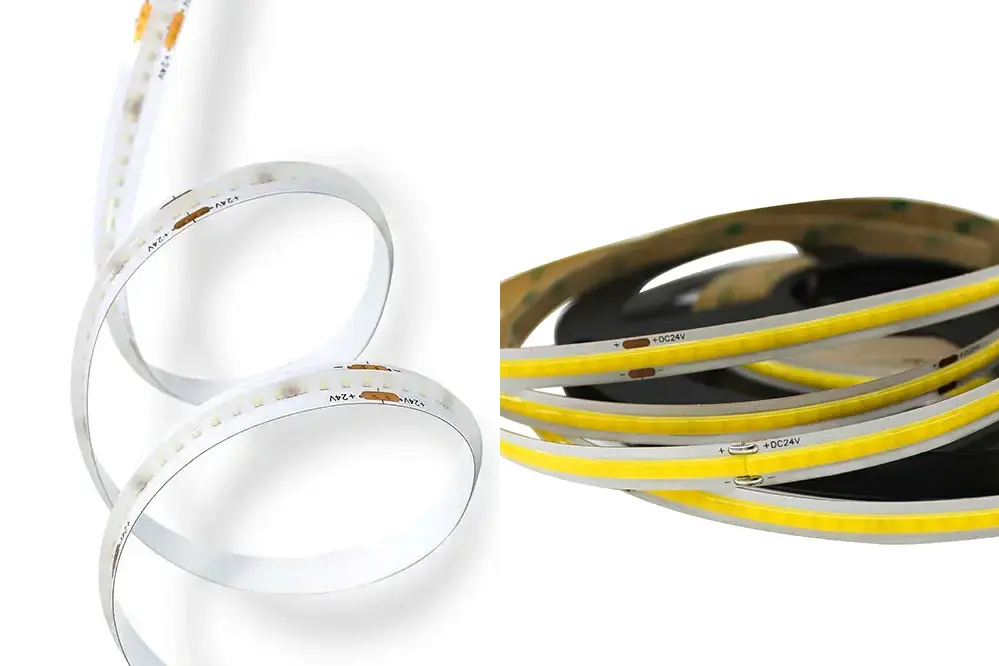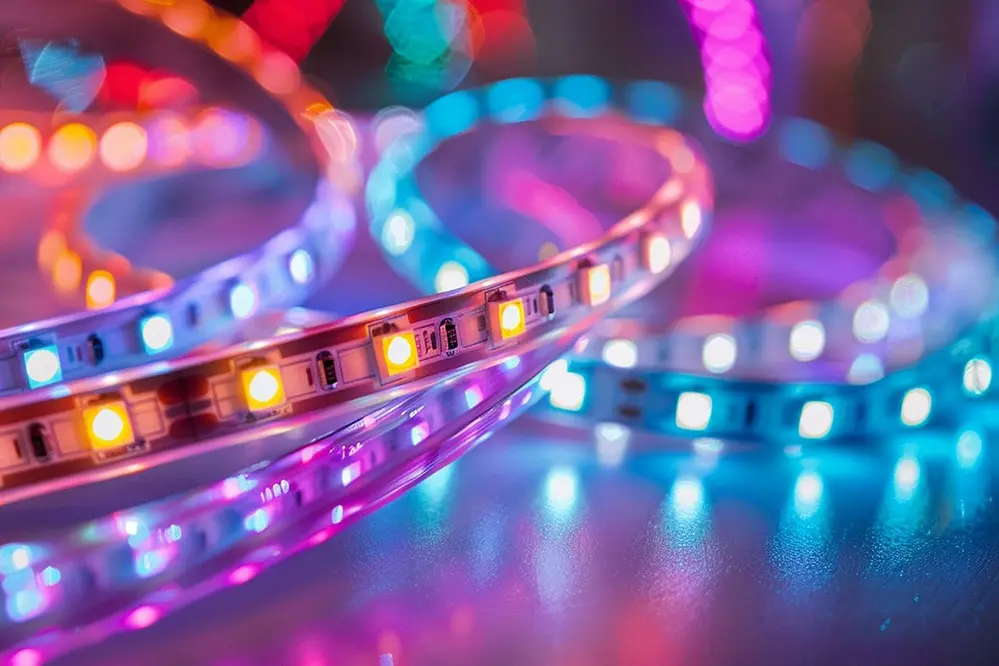CSP (Chip Scale Package) and COB (Chip On Board) LED strips are two popular types of LED lighting that cater to various needs. This guide explores their differences, applications, and benefits, helping you make an informed choice for your lighting projects.
Key Takeaways
• CSP LEDs are smaller and more versatile
• COB LEDs provide higher brightness and uniformity.
• Both types have specific applications and benefits.
Part 1: Understanding CSP and COB LED Strips
What is a CSP LED Strip?
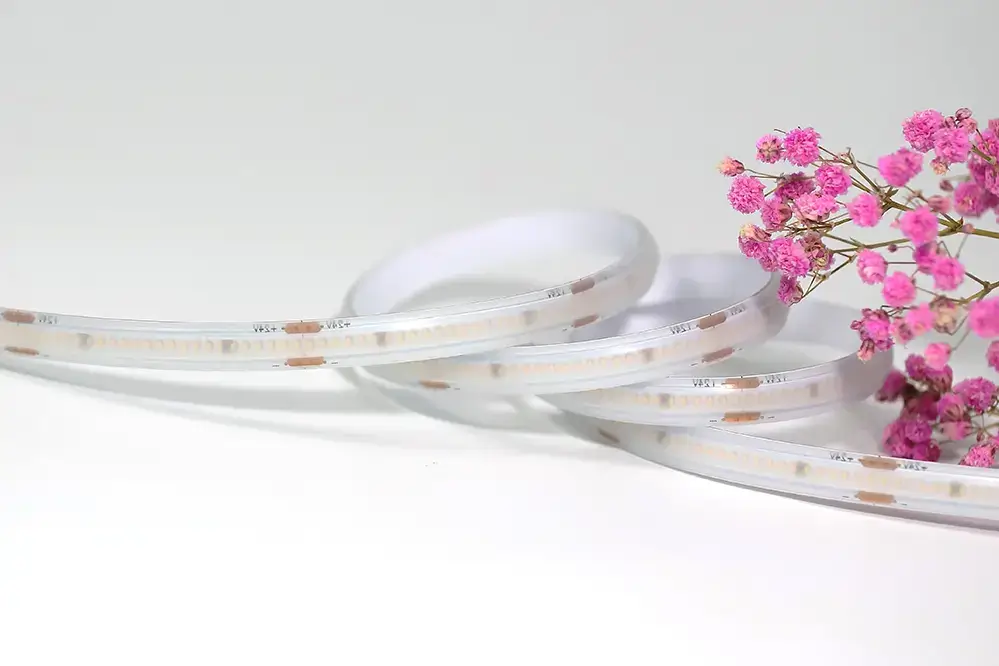
CSP LED strips use tiny LED chips directly mounted onto the strip, providing compact and efficient lighting solutions. These LEDs are known for their high power density and thermal performance.
Benefits of CSP LED Strips
• Compact Size: Allows for more flexible designs.
• High Efficiency: Excellent for energy-saving applications.
• Improved Durability: Enhanced thermal management ensures longevity.
What is a COB LED Strip?
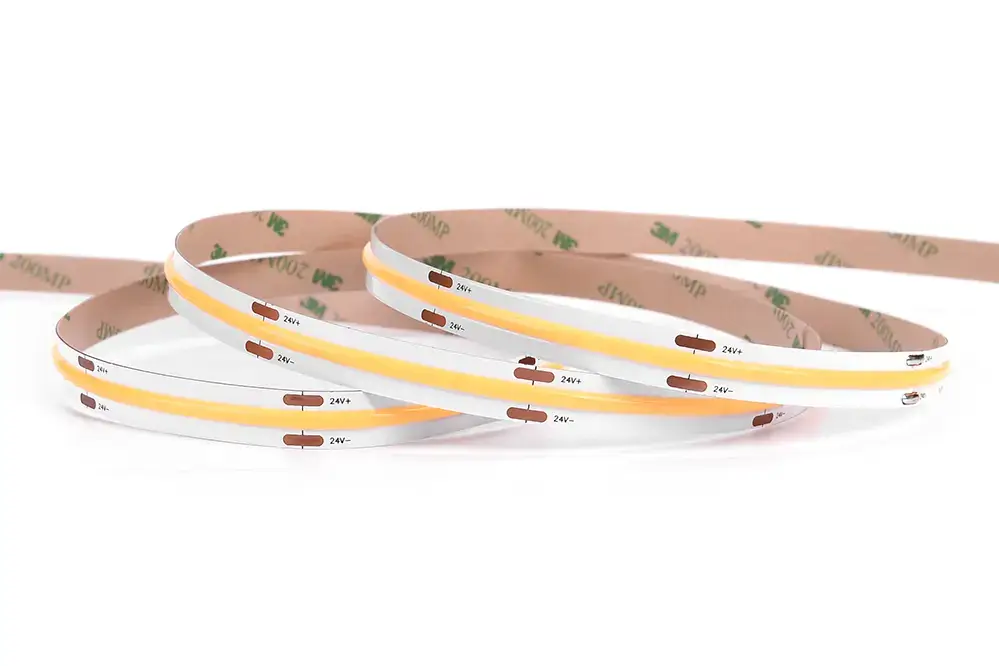
COB LED strips consist of multiple LED chips bonded directly onto a substrate, covered with a phosphor layer to diffuse light evenly. This design results in a smooth, continuous light output without visible hotspots.
Benefits of COB LED Strips
• High Brightness: Suitable for applications requiring intense light.
• Uniform Light Output: Provides a more natural lighting effect.
• Better Heat Dissipation: Extends the lifespan of the LEDs.
Key Differences Between CSP and COB LED Strips
| Feature | CSP LED Strip | COB LED Strip |
| Size | Smaller, more compact | Larger, due to multiple chips |
| Light Output | Directional, with some hotspots | Uniform, with no visible hotspots |
| Efficiency | Highly efficient | Efficient, but slightly less than CSP |
| Applications | Flexible lighting designs | High-intensity lighting needs |
| Heat Management | Superior thermal performance | Good thermal management |
Understanding LED Technology
LED technology has revolutionized lighting, offering energy efficiency, long lifespan, and versatility. CSP and COB are two advanced types of LED technologies that enhance these benefits further.
How LEDs Work
LEDs (Light Emitting Diodes) produce light when an electric current passes through a semiconductor material. This process is more efficient than traditional incandescent bulbs, which generate light through heating a filament.
The Evolution of LED Strips
LED strips have evolved from basic, low-output lights to advanced solutions like CSP and COB, which offer higher performance, better light quality, and more design flexibility.
Comparing CSP and COB LED Strips
When comparing CSP and COB LED strips, it’s important to consider factors such as size, light output, efficiency, and applications.
Size
CSP LED strips are smaller and more compact, making them ideal for applications where space is limited. They are perfect for intricate designs and tight spaces.
COB LED strips, on the other hand, are larger because they consist of multiple LED chips bonded together. This makes them suitable for applications requiring a broad and uniform light source.
Light Output
CSP LED strips provide directional light, which can sometimes result in hotspots. They are excellent for targeted lighting applications where precision is needed.
COB LED strips offer uniform light output with no visible hotspots. This makes them ideal for applications where a smooth and even light distribution is required.
Efficiency
Both CSP and COB LED strips are efficient, but CSP LEDs are typically more efficient due to their high power density and better thermal management. This makes them suitable for energy-saving applications.
COB LEDs are also efficient but slightly less so compared to CSP LEDs. However, they compensate for this with their higher brightness and uniform light output.
Applications
CSP LED strips are versatile and can be used in various applications, including automotive lighting, architectural lighting, consumer electronics, and signage.
COB LED strips are ideal for high-intensity lighting needs such as commercial lighting, residential lighting, photography and filmmaking, and outdoor lighting.
Heat Management
CSP LED strips have superior thermal performance, which enhances their durability and longevity. This makes them suitable for applications where long-term reliability is crucial.
COB LED strips also have good thermal management, but their performance is slightly lower than CSP LEDs. However, their design allows for better heat dissipation, extending their lifespan.
Detailed Comparison in Practical Scenarios
To help you choose between CSP and COB LED strips, let’s look at some practical scenarios and how each type performs.
Scenario: Kitchen Under-Cabinet Lighting
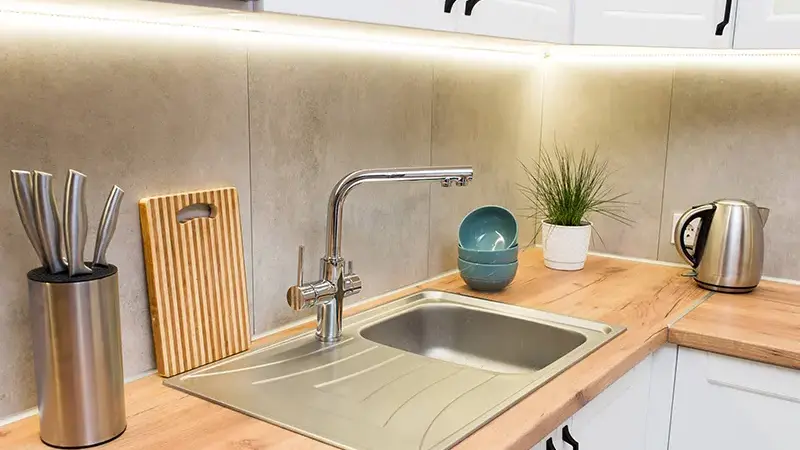
For kitchen under-cabinet lighting, COB LED strips are recommended. They provide a smooth, uniform light without shadows, making it easier to see and work on countertops.
Scenario: Car Headlights
For car headlights, CSP LED strips are ideal. Their compact size fits well in limited spaces, and their directional light ensures the road ahead is well-illuminated.
Scenario: Retail Store Lighting
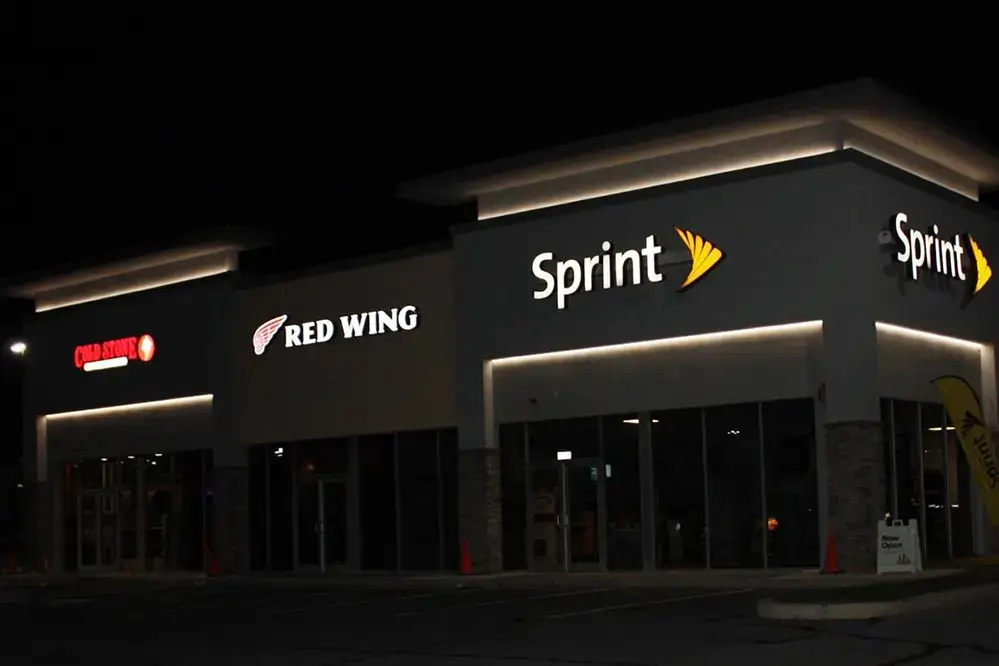
In retail stores, COB LED strips are preferred. Their high brightness enhances product visibility, making displays more attractive to customers.
Scenario: Gaming Setup
For gaming setups, CSP LED strips are recommended. Their flexible design allows for creative lighting setups that can enhance the gaming experience.
Scenario: Home Theater
In a home theater, COB LED strips are ideal. Their smooth, uniform light enhances the viewing experience without creating distracting hotspots or glare.
Part 2: Applications and Choosing the Right LED Strip
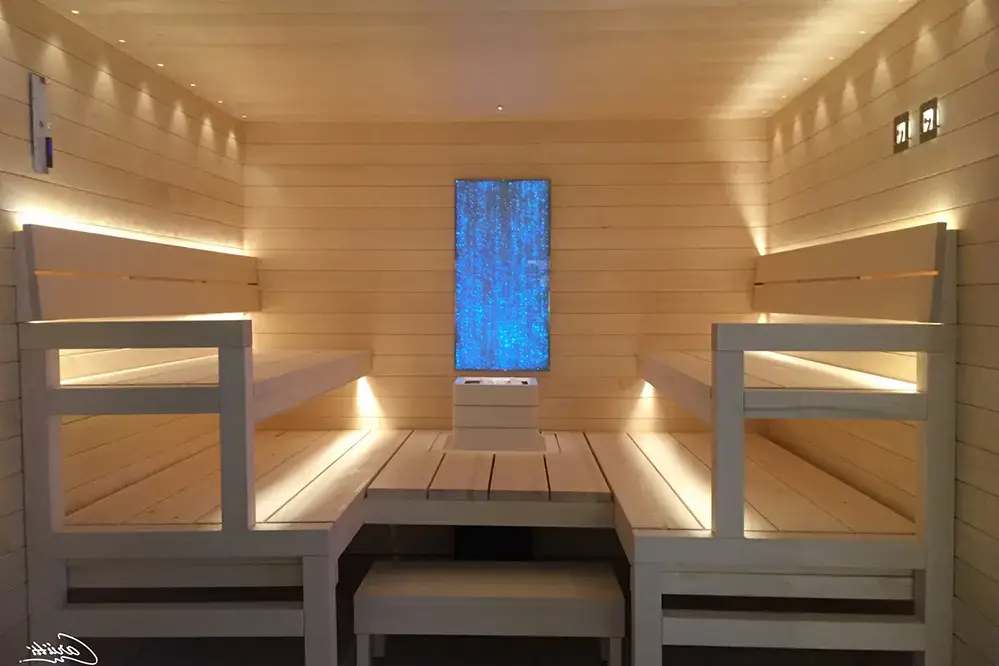
Applications of CSP LED Strips
CSP LED strips are ideal for applications where space is limited and precise lighting is required. Let’s explore some common uses in detail.
Automotive Lighting
CSP LED strips are widely used in automotive lighting due to their compact size and high efficiency. They provide powerful lighting solutions for headlights, taillights, and interior lighting.
Architectural Lighting
For architectural lighting, CSP LED strips are perfect for accent lighting and highlighting architectural features. Their small size allows for creative and flexible designs.
Consumer Electronics
In consumer electronics, CSP LED strips are used in devices where space and efficiency are critical. They provide bright and efficient lighting solutions for smartphones, tablets, and laptops.
Signage
CSP LED strips are suitable for backlighting in signs and displays. Their compact size and high brightness make them ideal for creating eye-catching signage.
Applications of COB LED Strips
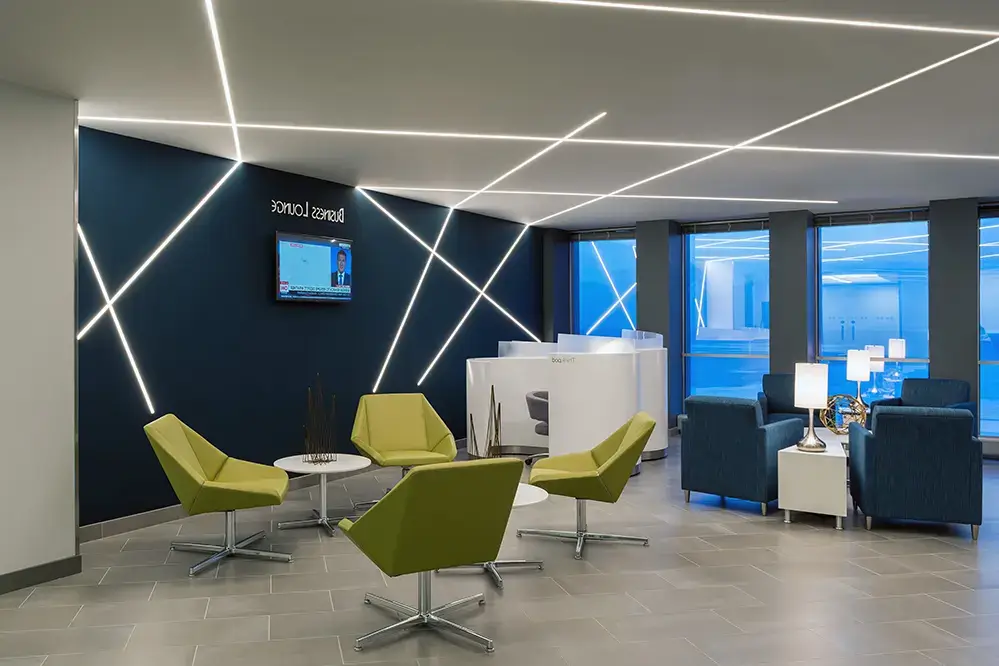
COB LED strips are suitable for environments needing high brightness and uniform lighting. Let’s explore some common uses in detail.
Commercial Lighting
In commercial lighting, COB LED strips are ideal for retail stores, offices, and showrooms. Their high brightness and uniform light output enhance visibility and create a welcoming environment.
Residential Lighting
For residential lighting, COB LED strips are perfect for ambient lighting and under-cabinet lighting. Their smooth and even light distribution creates a comfortable and inviting atmosphere.
Photography and Filmmaking
In photography and filmmaking, COB LED strips provide continuous and even lighting for shoots. Their uniform light output eliminates shadows and enhances image quality.
Outdoor Lighting
COB LED strips are used in outdoor lighting applications such as street lights and floodlights. Their high brightness and wide coverage make them ideal for illuminating large areas.
How to Choose the Right LED Strip
Choosing the right LED strip depends on several factors, including the application, efficiency, heat management, budget, and longevity. Let’s explore each factor in detail.
Consider the Application
• Space Constraints: Opt for CSP LED strips in compact spaces where precise lighting is required.
• Brightness Requirements: Choose COB LED strips for higher brightness needs and applications requiring uniform light distribution.
Evaluate Efficiency and Heat Management
• Energy Efficiency: CSP LEDs are typically more efficient due to their high power density and better thermal management.
• Thermal Performance: Both CSP and COB LED strips have good heat management, but CSP LEDs excel in this area.
Budget and Longevity
• Initial Cost vs. Long-term Savings: Consider the initial investment and potential energy savings. CSP LED strips may have a higher upfront cost but offer long-term savings due to their efficiency.
• Lifespan: Both CSP and COB LEDs have long lifespans, with CSP LEDs often lasting longer due to better heat management.
Installation Tips for CSP and COB LED Strips
Proper installation is crucial for maximizing the performance and lifespan of LED strips. Let’s explore some installation tips for both CSP and COB LED strips.
CSP LED Strip Installation
1. Measure the Area: Ensure accurate measurements to avoid cutting issues. Use a measuring tape to determine the length of the strip needed.
2. Clean the Surface: Use alcohol wipes to remove dust and grease for better adhesion. A clean surface ensures the strip sticks properly and lasts longer.
3. Use Proper Adhesives: High-quality double-sided tape or mounting clips can secure the strips. Choose adhesives that are compatible with the surface material.
4. Ensure Good Ventilation: Adequate ventilation helps in heat dissipation, extending the lifespan of the LEDs. Avoid installing the strips in enclosed spaces without proper airflow.
COB LED Strip Installation
1. Plan the Layout: Sketch the installation area to determine the length and connection points. Planning helps avoid mistakes and ensures a seamless installation.
2. Cut with Precision: Use sharp scissors or a cutting tool designed for LED strips. Follow the manufacturer’s guidelines for cutting to avoid damaging the strip.
3. Test Before Installation: Power up the strip to check for any defects. Testing ensures the strip works correctly and avoids reinstallation.
4. Use Appropriate Drivers: Ensure the power supply matches the voltage and current requirements. Using the right driver prevents electrical issues and ensures optimal performance.
Detailed Installation Guide for CSP and COB LED Strips
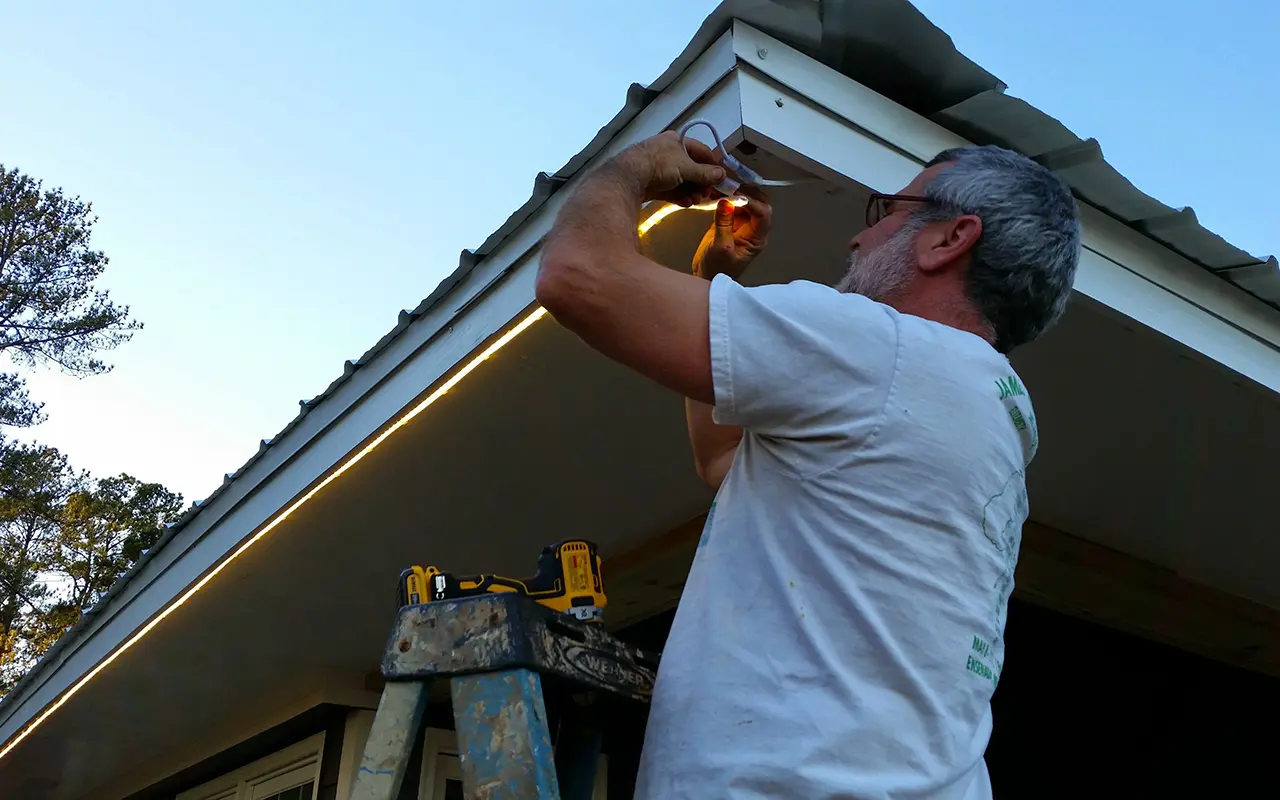
CSP LED Strip Installation Steps
1. Measure the Area:
• Accurate Measurement: Use a measuring tape to accurately measure the area where you will install the LED strip. Mark the start and end points to ensure precise placement.
• Plan the Path: If the strip needs to navigate around corners or obstacles, plan the path accordingly to avoid unnecessary bends or twists.
2. Clean the Surface:
• Dust and Grease Removal: Clean the surface with alcohol wipes or a suitable cleaner to remove dust, grease, and other contaminants. This ensures better adhesion and longevity of the strip.
• Dry Surface: Make sure the surface is completely dry before applying the adhesive.
3. Use Proper Adhesives:
• Double-Sided Tape: Use high-quality double-sided tape that is strong enough to hold the LED strip in place. Alternatively, use mounting clips for additional support.
• Adhesive Strength: Choose an adhesive that matches the surface material (e.g., metal, plastic, wood) to ensure strong bonding.
4. Ensure Good Ventilation:
• Heat Dissipation: Provide adequate ventilation around the LED strip to help dissipate heat. Avoid installing in enclosed spaces without proper airflow, as this can lead to overheating and reduce the lifespan of the LEDs.
• Placement: Consider using aluminum profiles or heat sinks to improve heat dissipation, especially in high-power applications.
5. Electrical Connections:
• Proper Wiring: Ensure correct polarity when connecting the LED strip to the power supply. Follow the manufacturer’s instructions for wiring to avoid electrical issues.
• Secure Connections: Use connectors or solder the wires securely to prevent loose connections that can cause flickering or failure.
COB LED Strip Installation Steps
1. Plan the Layout:
• Sketch the Layout: Draw a sketch of the installation area to plan the layout. Mark the placement of the LED strip, power supply, and any connection points.
• Determine Length: Measure and cut the LED strip to the required length, ensuring that you cut only at the designated cut points.
2. Cut with Precision:
• Cutting Tool: Use sharp scissors or a cutting tool specifically designed for LED strips. Follow the manufacturer’s guidelines to avoid damaging the strip.
• Clean Cuts: Make clean cuts to ensure proper electrical connections at the cut points.
3. Test Before Installation:
• Pre-Installation Test: Connect the LED strip to the power supply and test it before installation. Check for any defects, such as dead LEDs or color inconsistencies.
• Verify Functionality: Ensure the strip lights up correctly and evenly across its entire length.
4. Use Appropriate Drivers:
• Power Supply Matching: Select a power supply that matches the voltage and current requirements of the LED strip. Using an incorrect power supply can damage the LEDs.
• Driver Compatibility: Ensure the driver is compatible with the dimming controls (if applicable) and other system components.
5. Mounting the Strip:
• Adhesive Backing: Peel off the adhesive backing and carefully stick the strip to the surface, pressing firmly to ensure good contact.
• Mounting Clips: For additional security, use mounting clips spaced evenly along the length of the strip.
Real-World Application Examples
To better understand how CSP and COB LED strips can be used effectively, let’s explore some real-world application examples.
Example 1: Retail Store Display Lighting
• Requirement: High brightness and uniform lighting to enhance product visibility.
• Solution: Install COB LED strips along the shelves and display cases to provide bright, even lighting that makes products stand out. The uniform light output of COB LEDs ensures there are no shadows or dark spots, creating an inviting shopping experience.
Example 2: Automotive Interior Lighting
• Requirement: Compact, efficient lighting for tight spaces within the vehicle.
• Solution: Use CSP LED strips to light up the car’s interior, such as footwells, dashboard, and door panels. The small size and high efficiency of CSP LEDs make them ideal for these applications, providing bright light without consuming much power.
Example 3: Residential Ambient Lighting
• Requirement: Smooth, ambient lighting for a living room or bedroom.
• Solution: Install COB LED strips around the ceiling perimeter or behind crown molding to create a soft, diffused light that enhances the room’s ambiance. The continuous light output of COB LEDs provides a warm and inviting atmosphere.
Example 4: Outdoor Pathway Lighting
• Requirement: Durable, bright lighting for outdoor pathways and garden areas.
• Solution: Use COB LED strips in weatherproof enclosures along pathways and garden borders. The high brightness and wide coverage of COB LEDs ensure safe and attractive outdoor lighting.
Advanced Tips for Maximizing LED Strip Performance
To get the most out of your CSP and COB LED strips, consider these advanced tips:
1. Dimming Controls:
• Compatibility: Ensure your LED strips and drivers are compatible with dimming controls. Dimming allows you to adjust the brightness according to your needs, enhancing both functionality and ambiance.
• Smooth Dimming: Use high-quality dimmers to achieve smooth and flicker-free dimming.
2. Color Temperature Selection:
• Application-Specific: Choose the appropriate color temperature based on the application. Warm white (2700K-3000K) is ideal for residential spaces, while cool white (5000K-6500K) is better for task lighting and commercial environments.
• Consistency: Ensure consistent color temperature across all LED strips to maintain a uniform look.
3. Using Aluminum Profiles:
• Heat Dissipation: Install LED strips in aluminum profiles to improve heat dissipation and enhance the strip’s lifespan.
• Protection: Aluminum profiles also provide physical protection for the LED strips and create a clean, professional look.
4. Smart Controls:
• Integration: Integrate LED strips with smart home systems for advanced control. Use apps or voice commands to adjust lighting settings, create schedules, or activate scenes.
• Automation: Set up automation for tasks like turning on lights at sunset or dimming them during movie time.
Troubleshooting Common Issues
Even with proper installation, you may encounter some common issues with LED strips. Here’s how to troubleshoot them:
1. Flickering LEDs:
• Check Connections: Ensure all connections are secure and properly soldered. Loose connections can cause flickering.
• Power Supply: Verify that the power supply matches the voltage and current requirements of the LED strip. An inadequate power supply can cause instability.
2. Hotspots or Uneven Lighting:
• Installation Issues: Reinstall the strip to ensure it is laid out evenly without kinks or bends.
• Quality of Strip: Ensure you are using high-quality LED strips designed for uniform light output, especially for COB strips.
3. Dim LEDs:
• Voltage Drop: Check for voltage drop, especially in longer runs. Use thicker gauge wires or power the strip from both ends to minimize voltage drop.
• Power Supply: Ensure the power supply is capable of providing sufficient current for the entire strip.
4. Overheating:
• Ventilation: Improve ventilation around the LED strip to help dissipate heat.
• Heat Sinks: Use heat sinks or aluminum profiles to enhance heat dissipation.
Future Trends in LED Strip Lighting
The LED strip lighting industry is continuously evolving, with new technologies and trends emerging. Here are some future trends to watch out for:
1. Smart LED Strips:
• IoT Integration: LED strips integrated with the Internet of Things (IoT) for advanced control and automation.
• Voice Control: Compatibility with voice assistants like Amazon Alexa and Google Assistant for hands-free control.
2. Higher Efficiency LEDs:
• Improved Efficiency: Continued advancements in LED technology will lead to even higher efficiency and lower power consumption.
• Environmental Impact: More environmentally friendly designs with reduced carbon footprint.
3. Enhanced Color Quality:
• Full Spectrum LEDs: Development of full spectrum LEDs that mimic natural sunlight, improving color rendering and reducing eye strain.
• Customizable Colors: Greater ability to customize and adjust color temperatures for different applications.
4. Flexible Designs:
• More Flexibility: LED strips that are even more flexible, allowing for more creative and intricate designs.
• Bendable and Twistable Strips: Strips that can be bent and twisted without damaging the LEDs, expanding application possibilities.
FAQs
What are the main differences between CSP and COB LED strips?
CSP LED strips are smaller and more efficient, while COB LED strips provide higher brightness and uniform light output. CSP strips are ideal for applications where space is limited, while COB strips are better suited for environments needing intense and even lighting.
Which type of LED strip is more durable?
CSP LED strips generally have better thermal management, contributing to longer durability. However, both CSP and COB LED strips are designed to last longer than traditional lighting options.
Can COB LED strips be used for accent lighting?
Yes, COB LED strips can be used for accent lighting. Their uniform light output and high brightness make them suitable for highlighting features and creating ambient lighting effects.
Are CSP LED strips more energy-efficient?
Yes, CSP LED strips are known for their high efficiency. They provide bright light while consuming less power compared to other types of LED strips, making them ideal for energy-saving applications.
How do I choose between CSP and COB LED strips for my project?
Consider the space, brightness requirements, and budget. CSP LED strips are best for compact and efficient designs, whereas COB LED strips are ideal for high brightness and uniform lighting. Evaluate the specific needs of your project to make the best choice.
What should I do if my LED strip is flickering?
Ensure all connections are secure and check that the power supply matches the voltage and current requirements of the LED strip. Flickering can often be caused by loose connections or an inadequate power supply.
How can I improve the lifespan of my LED strips?
Proper installation, good ventilation, and using high-quality drivers can help improve the lifespan of your LED strips. Additionally, integrating them with aluminum profiles can enhance heat dissipation, further extending their longevity.
Can I use both CSP and COB LED strips in the same project?
Yes, you can use both types in the same project to take advantage of their respective benefits. For example, you might use CSP strips for areas requiring precise lighting and COB strips for areas needing uniform, high-intensity lighting.
Conclusion
Choosing between CSP and COB LED strips depends on your specific needs and applications. CSP LED strips offer compact size and high efficiency, making them ideal for tight spaces and energy-saving applications. On the other hand, COB LED strips provide higher brightness and uniform light output, perfect for commercial and residential environments requiring intense and smooth lighting. Both CSP and COB LEDs bring significant advantages over traditional lighting solutions, including better energy efficiency, longer lifespan, and greater design flexibility. By understanding the differences and benefits of each type, you can make an informed decision that best suits your lighting needs.
If you’re looking to source high-quality LED strip lights and LED neon strips, consider contacting Unitop, a professional Chinese manufacturer renowned for their expertise in LED technology. Unitop offers a wide range of innovative and reliable lighting solutions to meet various requirements. Whether you need custom designs, superior performance, or cost-effective options, Unitop can provide the perfect LED lighting products for your projects. Reach out to Unitop to explore their extensive selection and benefit from their industry-leading experience and service.
